|
|
|
Mabel Vernon was born in Wilmington, Delaware. Her father was editor and publisher of the Wilmington Daily Republican . Part of a large Quaker-Presbyterian family, she went to Swarthmore with Alice Paul and graduated in 1906. During her college career she won awards as a debater. Vernon taught Latin and German in a Pennsylvania high At Alice Paul's invitation, Vernon worked as a regional fund-raiser and recruiter for the Congressional Union for Woman Suffrage (CU) shortly after its formal organization in 1913. The following year she led the CU campaign against Democratic congressional candidates in Nevada along with Anne Martin. She soon headed the push to establish state branches in several western states. When the CU asked Sara Bard Field and other suffrage envoys to travel cross-country by automobile in 1915, Vernon worked as the advance person, organizing events and meetings in several major cities. She joined Alice Paul and others in testifying for woman suffrage before the House Judiciary Committee at the end of that year. Vernon has been described by her fellow activists as the first, and perhaps the most outstanding, of NWP organizers. She was named secretary of the newly formed NWP in June 1916. The following autumn, Vernon worked as a regional organizer, doing street speaking and holding rallies to encourage citizens not to support the reelection of legislators opposed to a federal suffrage amendment. She participated in the 1919 “Prison Special” tour, which did much to dispel popular fears of NWP militancy and win sympathy for the sacrifices that NWP activists had made for the suffrage cause. During the two years leading up to the ratification of the 19th Amendment, Vernon reprised her role as a regional organizer, working especially in Georgia, Kentucky, and Delaware. Mabel Vernon was also notable for her audacious demonstrations during major presidential addresses–calling out to President Wilson during his Independence Day speech in 1916. After Wilson's closely contested reelection in November 1916, she and other NWP activists secured front-row gallery seats for his annual address to Congress. During the speech, Vernon and the others unfurled a suffrage banner from inside Vernon's coat, an action that won publicity across the country. Vernon was also among the first group of NWP women sentenced to brief terms in the District jail when she was charged with obstructing traffic while picketing the White House in June 1917. Vernon remained active in the NWP in the 1920s and served as its executive secretary. Deeply involved in the Women for Congress campaign, she participated in a 1926 transcontinental motor trip that encouraged support for female candidates for office. Vernon also worked for the Equal Rights Amendment. In 1930 she shifted her activism to the Women's International League for Peace and Freedom. From the 1930s through the 1950s she devoted her time to the issues of disarmament, peace, Latin American rights, and international relations. She shared a Washington, D.C., residence with her close companion and fellow activist Consuelo Reyes-Calderon, from 1951 to 1975. |
 Century of Struggle The Womans Rights Movement Young suffragists who helped forge the last links in that chain were not born when it began. Old suffragists who forged the first links were dead when it ended. It is doubtful if any man, even among suffrage men, ever realized what the suffrage struggle came to mean to women |

Women of the American Suffrage Movement
Womens Suffrage Timeline
American Civil War Women
Womens Civil War Reading Titles
American Civil War Recipes
Civil War Exhibits
Organizing the First Convention of Women Voters Since Suffrage Passed. Harris & Ewing. 1921.
click to enlarge photo

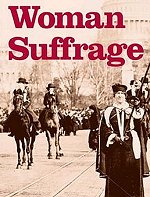 The Concise History of Woman Suffrage: Selections from History of Woman Suffrage, by Elizabeth Cady Stanton, Susan B. Anthony, Matilda Joslyn Gage, and the National American Woman Suffrage Association |
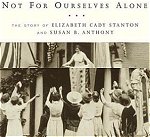 Not For Ourselves Alone: The Story of Elizabeth Cady Stanton and Susan B. Anthony Two heroic women who vastly bettered the lives of a majority of American citizens. For more than fifty years they led the public battle to secure for women the most basic civil rights and helped establish a movement that would revolutionize American society |
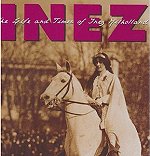 The Life and Times of Inez Milholland Inez Milholland was the most glamorous suffragist of the 1910s and a fearless crusader for women's rights. Moving in radical circles, she agitated for social change in the prewar years, and she epitomized the independent New Woman of the time. Her death at age 30 while stumping for suffrage in California in 1916 made her the sole martyr of the American suffrage movement. |
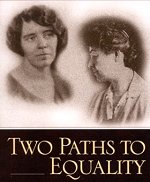 Two Paths to Equality: Alice Paul and Ethel M. Smith in the Era Debate, 1921-1929 Amy E. Butler expertly deals with the ERA, Equal Rights Amendment, and two of the more important figures in the early ERA debate. |
Kindle Available The Grimke Sisters from South Carolina: Pioneers for Women's Rights and Abolition A landmark work of women's history originally published in 1967, Gerda Lerner's best-selling biography of Sarah and Angelina Grimke explores the lives and ideas of the only southern women to become antislavery agents in the North and pioneers for women's rights. This revised and expanded edition includes two new primary documents and an additional essay by Lerner. In a revised introduction Lerner reinterprets her own work nearly forty years later and gives new recognition to the major significance of Sarah Grimke's feminist writings |
Kindle Available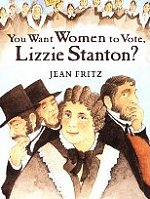 You Want Women to Vote, Lizzie Stanton? Grade 3-6. Fritz applies her gift for creating engaging, thorough historical literature to a larger-than-life historical figure. Stanton was a radical among radicals, and this objective depiction of her life and times, as well as her work for women's rights, makes readers feel invested in her struggle. An appealing, full-page black-and-white drawing illustrates each chapter. For students who need a biography, this title should fly off the shelves with a minimum of booktalking. And it is so lively that it is equally suitable for leisure reading.? |
 Recollections of 92 Years, 1824-1916 When the indomitable Meriwether was banned from her home by Union soldiers because her husband was a Confederate officer, she spent the next two years bartering for food and shelter for herself and her three young sons. After the war, Meriwether embarked on a decades-long career as an author and advocate for the equality of women, keeping up the crusade until her death in 1916--the year congressional support for women's suffrage emerged. |
Sources:
U.S. Library of Congress
Federal Citizen